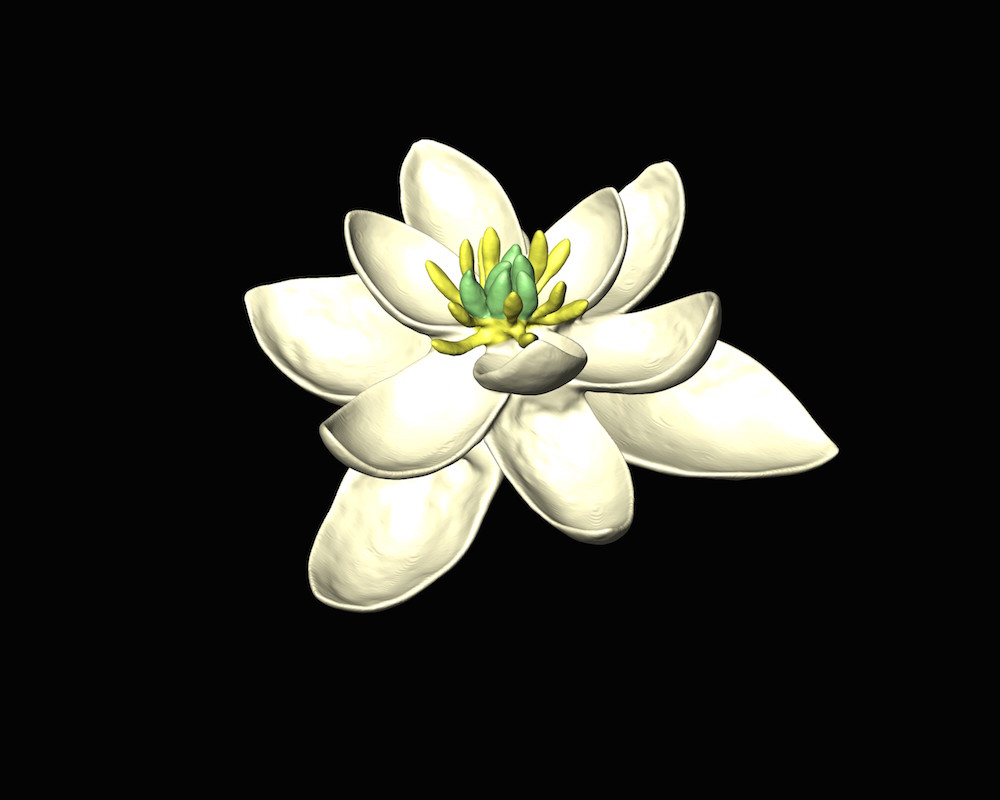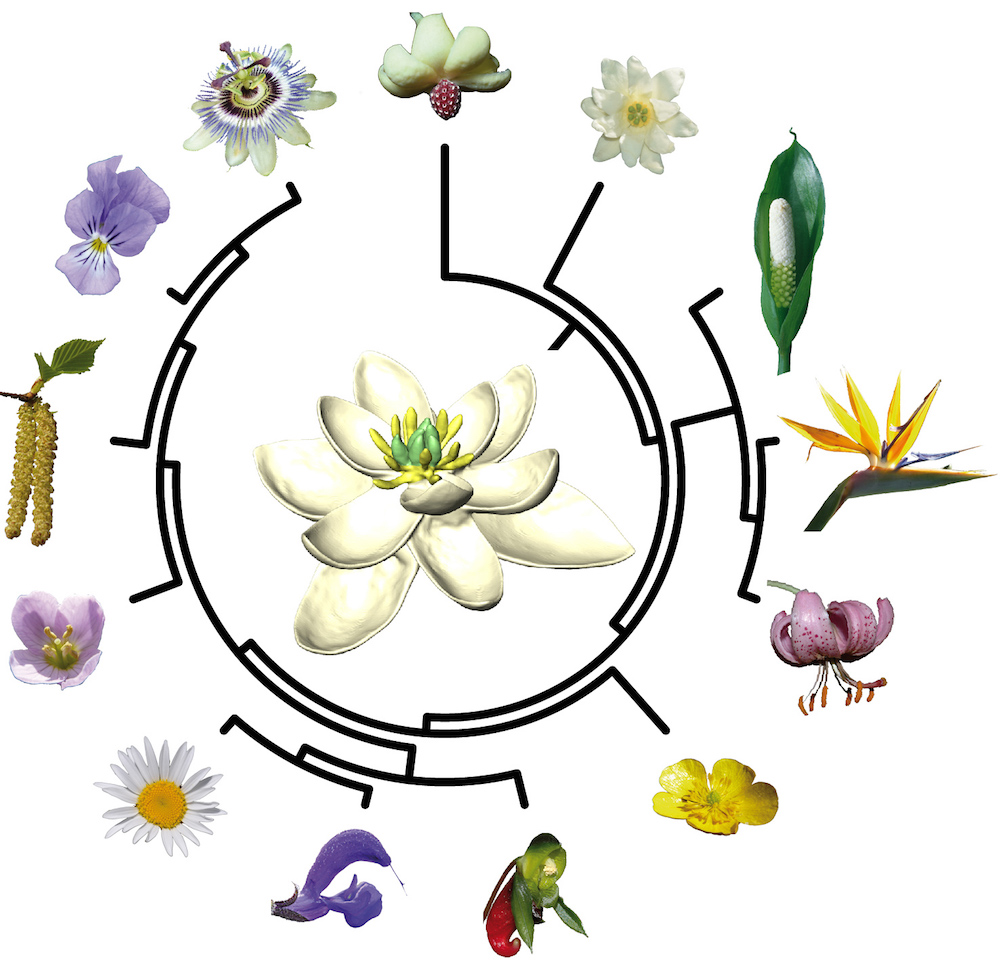Blossoming Bisexual: World's 1st Flower Had Male and Female Parts

When the world's first flower sprouted about 140 million years ago, it was bisexual, possessing both male and female reproductive parts, according to the researchers who virtually reconstructed the blossom in a new study.
The discovery of the dinosaur-age posy sheds light on the evolution and diversification of flowering plants, or angiosperms, the largest group of plants on Earth, the researchers said. For instance, the reconstruction shows how the ancient flower differed from its numerous modern descendants.
"The petal-like parts and the stamens [male reproductive organs in a flower] were more numerous than in most living species, and were probably organized in multiple sets of three," said the study's lead researcher, Hervé Sauquet, an associate professor at the Laboratory of Ecology, Systematics and Evolution at the University of Paris-Sud in France. [Photos: Ancient Flowering Plant May Have Lived with Dinosaurs]
There are many mysteries in plant evolution, and Sauquet and his colleagues were determined to solve one of the biggest ones: what the original angiosperm looked like.
"We know a lot about the evolutionary history of this group, in particular how plant families are related to one another, but we still know very little about how their emblematic structure — the flower — has evolved and diversified since their origin," Sauquet told Live Science in an email. "That's why I decided to join forces with other experts and create the international eFLOWER initiative to tackle these questions."
Because there are no known fossils of the world's oldest angiosperm— the oldest uncontroversial fossil flower dates to about 130 million years ago, a good 10 million years before the likely birth of the earliest flower — Sauquet and his colleagues used a method known as ancestral state reconstruction, he said.
This method uses information from the known evolutionary tree — a diagram showing relationships between flowers based on their similarities and differences — and from the known features of living flowers "to make a guess about the structure of ancestral flowers at different points of divergence in the tree," Sauquet said.
Get the world’s most fascinating discoveries delivered straight to your inbox.
To reveal the first flower's anatomy, the researchers used probabilistic models that would calculate the likelihood of the emergence of certain floral characteristics throughout time. This method allowed them "not only to find out what ancestral flowers were like, but also to measure uncertainty" around the results, Sauquet said.
The results showed that when flowers first popped up on Earth, they went through a series of simplifications in which structures were reduced or merged until the flowers settled on an optimal and stable architecture, he said.
Once flowers achieved this stable architecture, they likely started to diversify and develop other features, such as symmetry, he noted.
However, there is still much to learn about early angiosperms and their environments. For instance, it's unclear which animals might have eaten or pollinated these flowers, although "some authors have speculated that flies might have been among the earliest pollinators of flowers," Sauquet said.
Moreover, studies on fossilized animal poop, known as coprolites, show that certain paleo-beasts munched on angiosperms. For example, an unknown dinosaur — but apparently a large one, judging from the size of its droppings — ate angiosperms about 75 million years ago, according to research presented at the 2015 Society of Vertebrate Paleontology conference in Dallas.
The new study was published online today (Aug. 1) in the journal Nature Communications.
Original article on Live Science.

Laura is the managing editor at Live Science. She also runs the archaeology section and the Life's Little Mysteries series. Her work has appeared in The New York Times, Scholastic, Popular Science and Spectrum, a site on autism research. She has won multiple awards from the Society of Professional Journalists and the Washington Newspaper Publishers Association for her reporting at a weekly newspaper near Seattle. Laura holds a bachelor's degree in English literature and psychology from Washington University in St. Louis and a master's degree in science writing from NYU.



